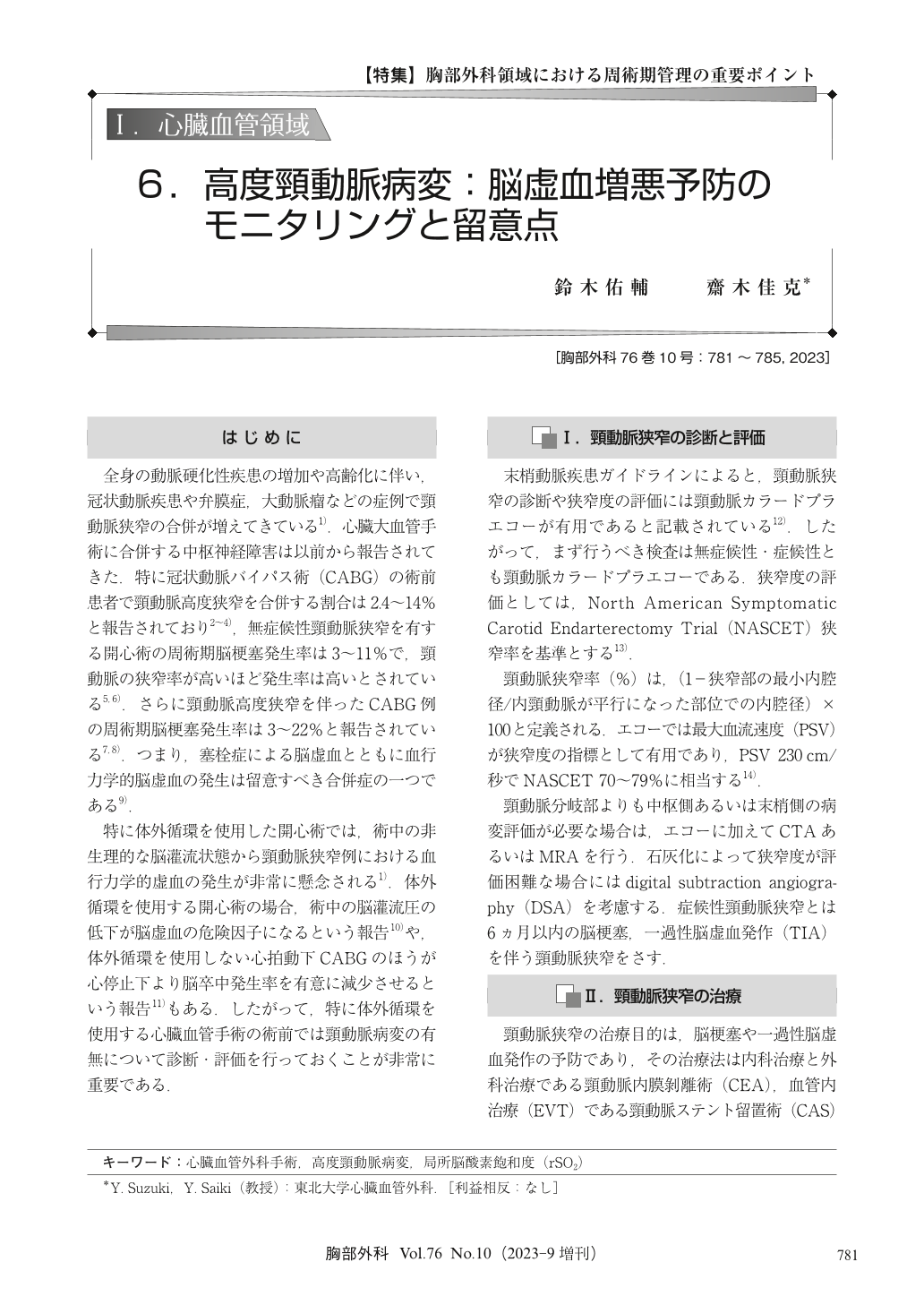Japanese
English
- 有料閲覧
- Abstract 文献概要
- 1ページ目 Look Inside
- 参考文献 Reference
全身の動脈硬化性疾患の増加や高齢化に伴い,冠状動脈疾患や弁膜症,大動脈瘤などの症例で頸動脈狭窄の合併が増えてきている1).心臓大血管手術に合併する中枢神経障害は以前から報告されてきた.特に冠状動脈バイパス術(CABG)の術前患者で頸動脈高度狭窄を合併する割合は2.4~14%と報告されており2~4),無症候性頸動脈狭窄を有する開心術の周術期脳梗塞発生率は3~11%で,頸動脈の狭窄率が高いほど発生率は高いとされている5,6).さらに頸動脈高度狭窄を伴ったCABG例の周術期脳梗塞発生率は3~22%と報告されている7,8).つまり,塞栓症による脳虚血とともに血行力学的脳虚血の発生は留意すべき合併症の一つである9).
Cerebrovascular complications in cardiovascular surgery have long been documented. It is very important to diagnose and evaluate the stenosis of carotid artery before cardiovascular surgery. When indicated, carotid endarterectomy (CEA) or carotid artery stenting (CAS) for severe carotid artery stenosis may be considered before cardiovascular surgery. However, it has not been necessary performed in the real-world. It seems to be appropriate to maintain a mean arterial pressure of 50-70 mmHg during cardiovascular surgery with extracorporeal circulation. In addition, perioperative cerebral metabolism and circulation monitoring using a near-infrared cerebral oxygen monitor such as rSO2 is very useful from the viewpoint of preventing exacerbation of cerebral ischemia.

© Nankodo Co., Ltd., 2023


